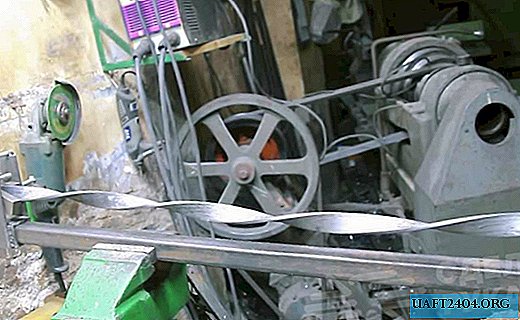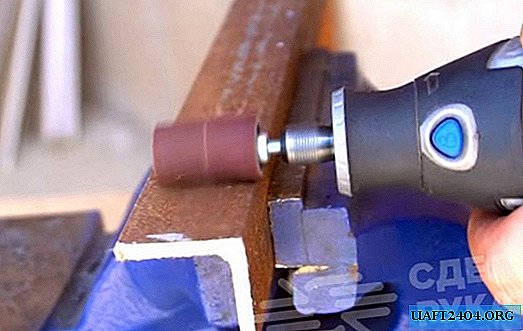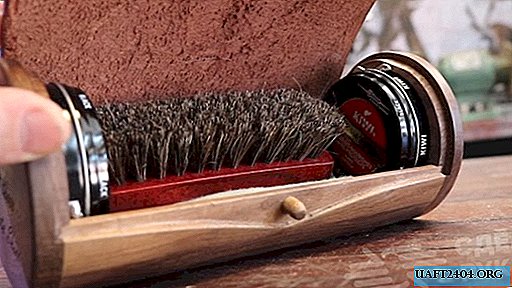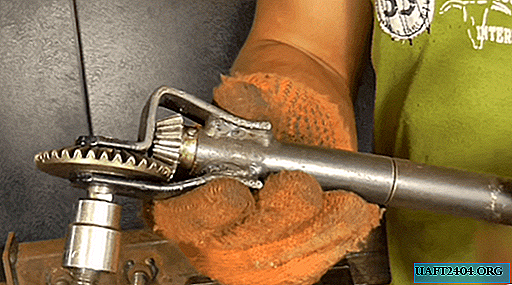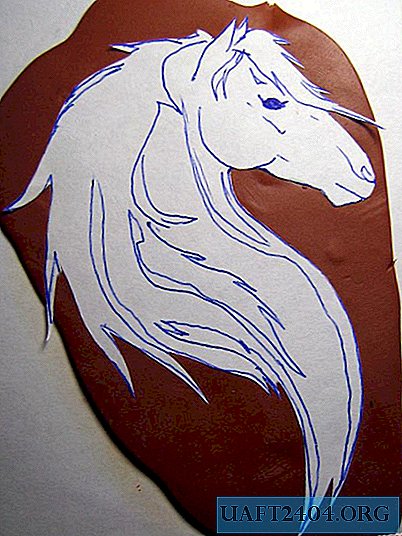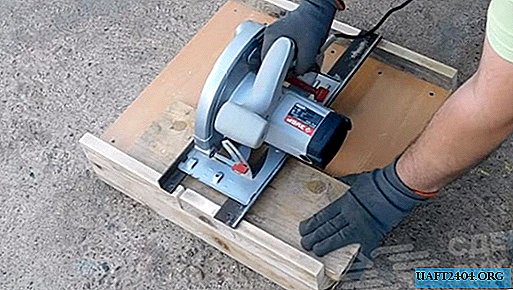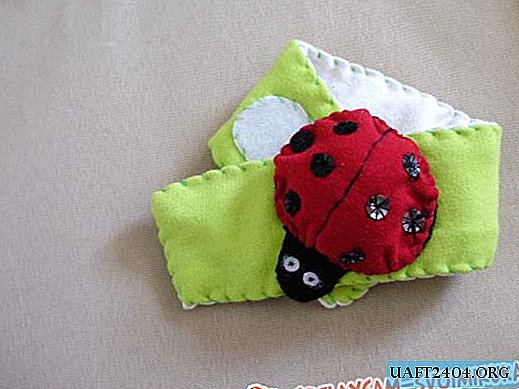Share
Pin
Tweet
Send
Share
Send
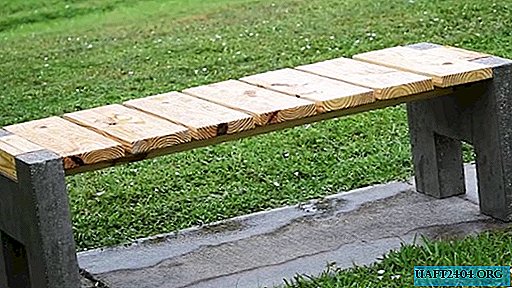
Will need
Before embarking on a planned project, we will prepare the following materials and products:
- Chipboard with melamine coating;
- pine board;
- ready-mixed cement-sand mixture;
- rebar with a diameter of 10 mm;
- various screws;
- metal corner brackets;
- ready-made mixture for sealing joints in the formwork;
- colorless moisture resistant varnish;
- building cord, etc.
To work on the bench you will need the following tools and devices: a circular saw for wood and metal, a grinder, a clamp, a reciprocating saw drive, a drill, a screwdriver, sandpaper, a brush, a ruler and a marker, a container (trough), a shovel, a trowel.
The process of making a garden bench
We begin work with the manufacture of two identical formwork for concrete legs. To do this, divide the sheet of melamine with a portable circular saw into two halves.
Then we dissolve each of them on a stationary circular saw into the necessary elements of two units.

We assemble formwork using clamps, a drill, a drill and screws, taking measures to increase their strength and rigidity.

To prevent the concrete mixture from sticking to the protruding corners of the formwork when drying, we paste them with a special tape.

We wipe the formwork for the bench legs from the inside with a damp cloth to remove dust, dirt and debris. We apply sealant from the construction gun to all joints and smooth it with a special profile.

To strengthen the concrete legs, we use a 10-mm reinforcement, cutting it along the length of the pendulum saw.

Knead the concrete solution and fill it with formwork.

When they are half-filled, we put the pieces of reinforcement in the solution and shake the formwork, placing a flat file under the base from the edge, manually.

We fill the formwork completely and to remove the air remaining in the solution, we set the side walls of the formwork into vibration, acting on the perimeter with a saber saw drive.

Now we leave the formwork with the poured concrete mortar for one week alone until it hardens. Then we dismantle the formwork, unscrewing the screws with which they were fastened, and set the legs in the right place.

In the upper shallow, but wide grooves of the legs, we lay the longitudinal board of the seat, making sure that there is a small gap between the walls of the groove and the board to compensate for the thermal expansion of the materials.

In the groove flush with the outside of the leg, end to end to the end of the longitudinal board, set the transverse.

We do the same thing on the other hand. We cut the longitudinal board along the transverse line, departing from the outer edge of the concrete base the width of the wooden insert.
We remove the wooden elements of the seat and clean the legs with sandpaper, removing bumps, rounding corners, edges and sagging.
To protect the concrete legs from moisture, we cover them with silicone enamel. Letting it soak and dry, paint the concrete in black or another color.

We process the boards with a grinder and sandpaper until all burrs, roughnesses and rounded edges are removed.
From the bottom of the longitudinal board for its strengthening and stability in the middle, we glue and screw the board narrower, but of the same thickness, which at its ends will abut against the concrete legs.


We tie the concrete legs with a building cord with an interference fit and lay across, lubricating the place of contact with the longitudinal board with glue, the seat elements with a gap equal to the thickness of the melamine bar (20 mm) between the cord threads.

Starting from the second, and to the last, we fix the transverse elements with clamps, and fasten them with screws from the bottom.

We don’t glue two extreme transverse elements of the seat, because they will be removable. To do this, we fasten the bars to them from the end in the middle on three recessed screws.
On the longitudinal board of the seat, on two sides we prepare places for two long screws that will be screwed into concrete after the bench is installed in its place.

The ends of the transverse beam and the longitudinal board are closed with a wooden element and we fasten it with four screws.
All wooden parts of the seat are coated in two layers on top and bottom with urethane varnish to protect from moisture, sun and cracking.

After installing the concrete legs in the right place, we return the wooden seat without the extreme crossbars into place and screw two screws fully into the seats prepared for them in the longitudinal board of the seat.
We put in place the extreme transverse elements of the seat and the bench is completely ready to fulfill its functions.
By the way, the seat to the concrete legs can also be attached using metal corners, attaching them from the bottom with screws to the reinforcing beam and the sides of the legs.


Share
Pin
Tweet
Send
Share
Send


